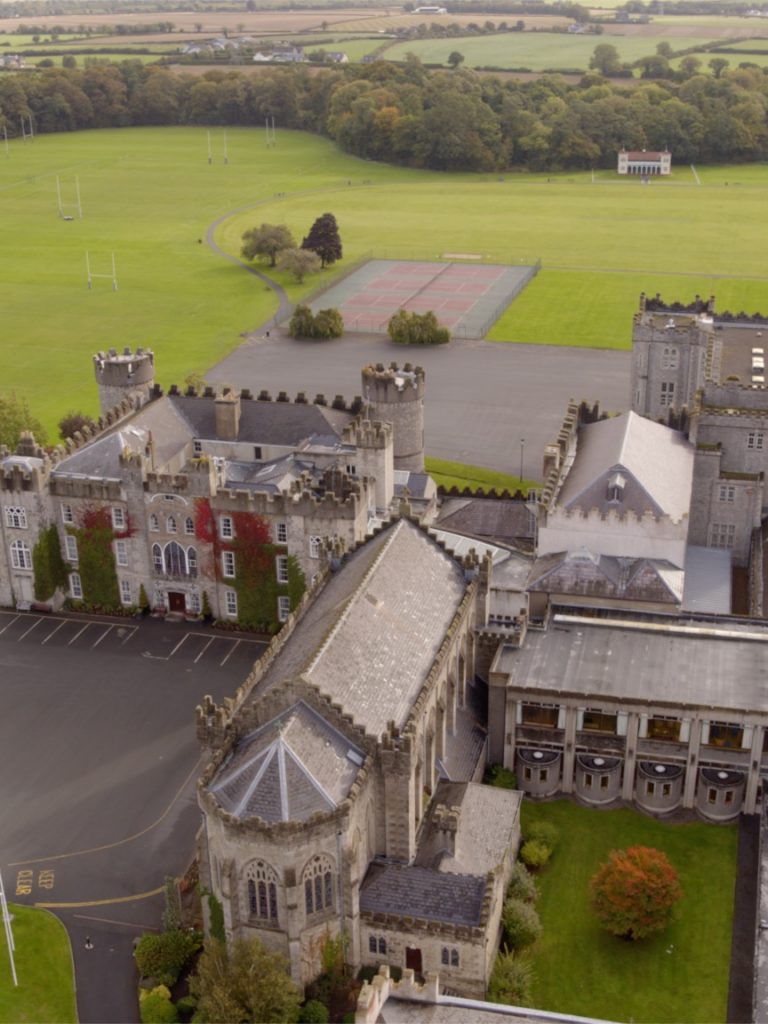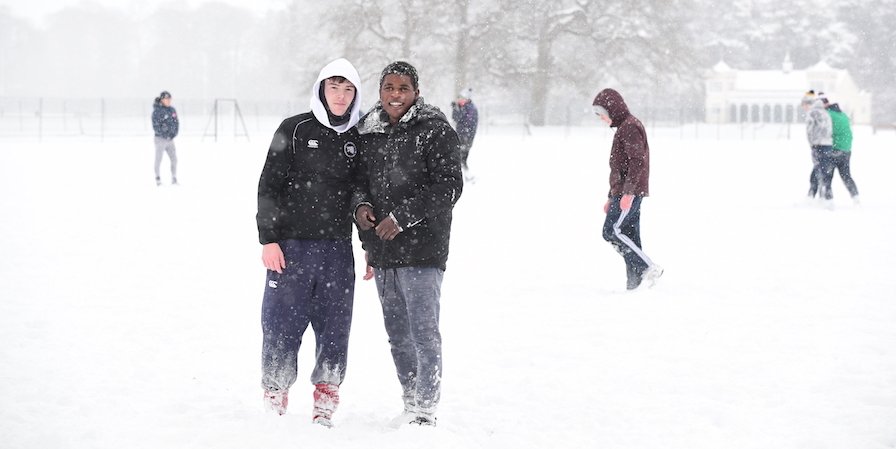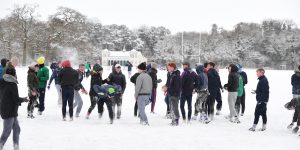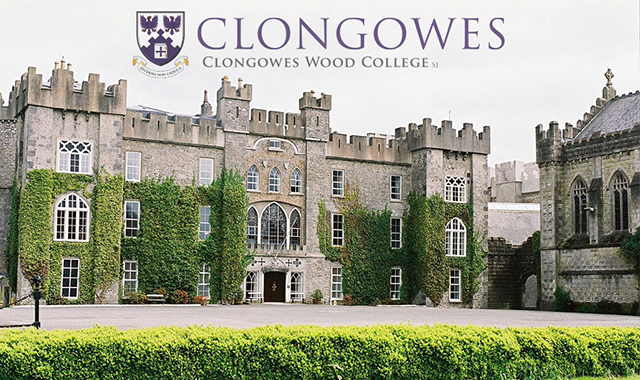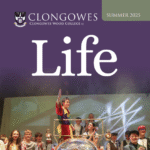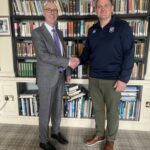‘Yes, the newspapers were right: snow was general all over Ireland.’ With these words James Joyce, arguably our most famous past pupil, commenced the conclusion to The Dead, arguably his most famous short story. With its themes of love and loss, the tale of Gabriel Conroy (based on Con Curran, Joyce’s schoolmate in Belvedere) makes for poignant reading and came to mind more than once during the snow storm that enveloped the college at the beginning of March…
The Clongowes that Joyce inhabited from 1889-1892 (and that he recounts so well in A Portrait of the Artist as a Young Man) was not as comfortable as it is today and snow – indeed cold weather in general – was a more challenging prospect for the smaller student population, many of whom were much younger than the present boys (Joyce himself was only six and a half when he arrived). The absences of electricity and central heating were allied to limited piped water with the students being obliged to break the ice from the surface of the pitchers on winter mornings before bathing.
While winters may not have been more severe in the nineteenth-century, nonetheless the boys spent more of the time in Clongowes in the years before mid-term and winter breaks and were often on campus for more than three months at a time. These were also the days before rugby and the chief sport of cricket could not be played in the winter for fear of damaging the ground. Gravel football did much to tire the boys out, as did a plethora of other pastimes ranging from handball to hurling by way of paper chases (hare and hounds) and cycling.
In the winter there was also the diversion of skating when the weather permitted and the boys from Tullabeg (which amalgamated with Clongowes in 1886) had been in the habit of ‘blading’ on the Grand Canal when it froze. Accordingly the authorities created a man made facility on the grounds by ‘lowering a sluice gate in the drainage ditch running at right angles to the caretaker’s lodge at the back avenue’. As a result ‘a large area of what is now the golf course became flooded and formed a pond’. The practice appears to have continued as late as the 1920s and 1930s with one participant recounting that it ‘was always an exciting adventure and many an intrepid enthusiast got more than his feet wet but was prepared to risk a “breakthrough” for the novelty’.[1]
Birth, Death and Resurrection
While we may all dream of a White Christmas as we commemorate Our Saviour’s birth, it rarely occurs in these parts. Snow is much more likely to arrive during Lent and to coincide with our remembrance of His 40 days in the desert before He died for our sins and then rose again for our salvation. These last few days have been a time of some disruption here in Clongowes but life has gone on and – please God – normal service will shortly be resumed and all will return safely to the fold.
When that happens it will be a scant four weeks until Easter and the most joyous and significant festival in the liturgical calendar. We commenced today somewhat sombrely with The Dead, but death is not the end, rather is it the beginning and so we conclude more joyously with the prospect of the resurrection and the eternal life that it promises.
Declan O’Keeffe, Head of Communications
[1] The Clongowes Union Centenary Chronicle (Privately published, 1997), 42.
[This piece has provoked quite a few memories from past pupils, who graduated in the 1950s and 1960s, pointing out that the practice described above continued into the latter decade (see the comments section below). Larry Ward (OC’61) speculates that the construction of the golf course (in 1966) may have sounded the death knell for the bladers. The genesis of the golf course also makes for interesting reading – see here for more].


